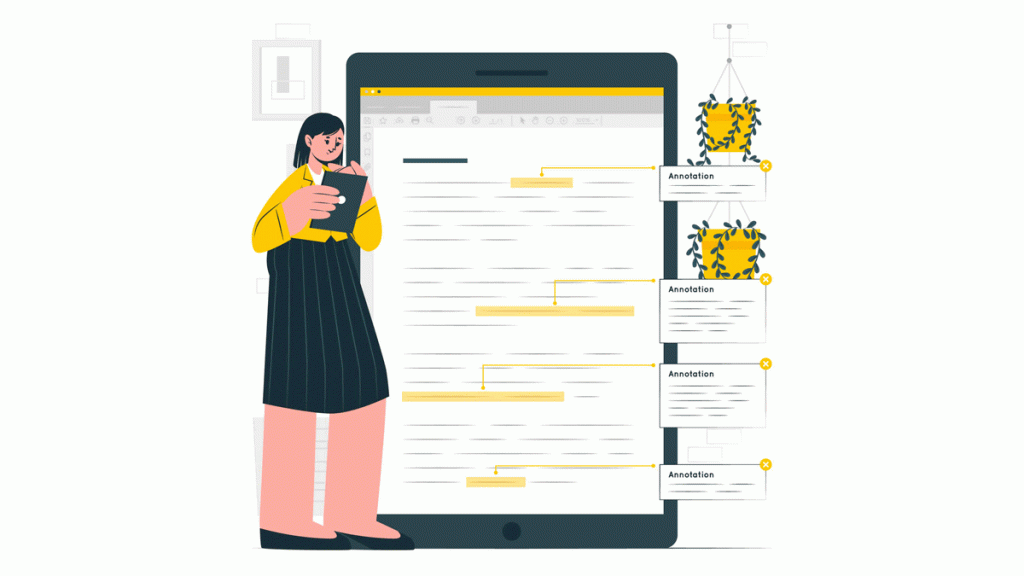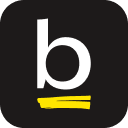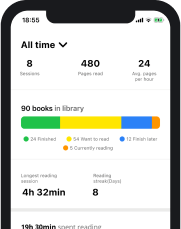As we all know, reading is a great activity. Whether you read for pleasure, to pass the time or in order to learn a new skill or gather information about a historical event, the benefits you get from reading are countless.
If you want to take your experience to the next level and better understand and remember more of what you read, it may be a good idea to look into how to annotate a book.
- What Is Annotating a Book?
- Why Should You Annotate Books?
- What Annotation Tools Do You Need?
- How to Annotate a Book?
- How to Annotate a Book Without Writing in It?
- What Is the Best Way to Annotate a Book?
- What Is the Difference Between Annotating for Fun and Annotating for Learning?
- What to Annotate in a Book?
- Final Thoughts on How to Annotate Books
While annotating books does have several benefits, which we will explore later on, learning how to do it efficiently and without ruining your books takes a bit of practice and experience. But first, let’s see what annotating a book actually means.
What Is Annotating a Book?
Book annotating is defined as the action of highlighting or underlining text in a book or even making notes directly on the pages read, in order to achieve a better understanding of the information or to remember the key elements of the material.
While the reasoning behind book annotations can differ from one individual to the other, the habit of making notes on books has been around for centuries. Let’s see how annotating a book is justified and what benefits it can bring a reader.
Why Should You Annotate Books?
Whether you’re a student learning basic skills from school books or simply a casual reader who enjoys spending time leafing through an interesting novel, we are sure that you felt the need to make an annotation in a book or to highlight part of the text, at least once. Well, your instincts were correct, as annotating can help you tremendously while reading. Here’s how:
1. A Better Understanding of the Book
The fact that reading and writing activate different parts of the brain is old news. How that affects our understanding of the texts we consume is a different story. By writing, we activate parts of our brains responsible for analytical thinking (among others).
This, in turn, means that by writing notes or annotating books while reading makes us understand the text more in-depth since we are more invested in the content and we are actively looking for details or important ideas.
2. Remembering the Main Ideas From What You Read
In a pretty similar way, writing things down has a huge effect on the amount of information we remember while reading.
By activating our brains in a more complex manner, we ensure that the reading we do has a more notable impact on our minds, which in turn means that the amount of information we will remember will be considerably bigger.
Whether you simply underline the important parts of the texts or highlight sections you find interesting or even make side notes directly on the book, this process increases your chances of storing the relevant information in your long-term memory instead of simply forgetting it hours after you’ve finished reading.
3. Great Way of Keeping Track of the Main Ideas in Case You Need to Write a Book Summary
While reading a book you know you need to write a summary about, you will surely try to pay more attention to some of the important details, you will follow the action timeline more carefully and you will try to remember the content in a way which will allow you to recreate it in writing later on.
A good way of keeping track of all the details is to simply take notes in one form or another while reading. You can underline or highlight the parts of the text which contain information that is essential for the summary. Alternatively, you can even write short notes of your own thoughts directly in the book, and this whole active reading and annotating process will be of tremendous help when it comes to actually putting pen to paper and writing your summary.
4. It Helps You Read Actively
The process of active reading involves a different level of determination to understand the information you are reading. On top of this, it comes with an additional layer of motivation and a clear intent not only to comprehend the reading material but also to evaluate it and process it internally through our own filters and judgment.
Annotating books while reading them makes you feel more engaged with the text, keeps you more focused and concentrated for longer periods of time, and adds value to every reading session. Reading actively increases your comprehension and information retention levels, and helps you reach new levels in terms of the reading experience you enjoy.
What Annotation Tools Do You Need?
Sometimes, learning how to properly annotate a book is as easy as figuring out what the right tools are for the job. There is a little more to it than picking the right writing utensils and other materials you may need for proper book annotations, but we all know that even the most skilled artists are just as good as their tools allow them to be.
Since we are dedicated here at Basmo to making you the ultimate reader and providing you with all the knowledge you need to meet your own personal goals, here is what you truly need if you want to annotate your books like a pro.
1. Pen/Pencil
One of the most common ways to annotate books remains the classic pen-and-paper method, even though we have the right technology to approach this process in completely different manners. That being said, regardless of whether you will actually do the writing directly on the book or on sticky notes, you are going to definitely need a pen or a pencil. You might think that it doesn’t really matter and that you will have the same results with any of them.
You would be partly right. There is a huge difference between the two though. With a pen, your scribbles will remain permanent. So if you are making your annotations directly on the book, you might want to consider the fact that your book will never look the same again. If we were given the opportunity to decide this for you, we would recommend you annotate directly on your books with a pencil instead.
Using a pen is ideal for when you do the annotations on sticky notes or index cards.
2. Highlighters
If you’re looking to learn how to annotate a book quickly, you might benefit from knowing that one of the best tips for annotating books is to just highlight the important information instead of scribbling on the book. After all, using colors for annotating books is a great way to make the most relevant data stand out.
By highlighting the most relevant information, you get to enjoy benefits that are somewhat similar to those of actually annotating and you can later find the data that matters to you a lot easier. Plus, it’s quite fun. Highlighters come in a great variety of colors, which can make it very facile for you to organize the data.
3. Sticky Notes
Learning how to annotate a book with sticky notes comes with a huge series of benefits. Sticky notes or sticky tabs can be used to make notes while reading without damaging the book in your hand. Instead of writing your thoughts directly on the book and ruining it forever, use sticky notes or sticky tabs.
You can write whatever feels important while reading, and you can leave the sticky notes in the book exactly on the page or near the paragraph your note is related to. Annotating books with sticky notes can also work great if you want to color code the information. Sticky notes are cheap and easy to use.
4. Index Cards
Index cards are another great annotation tool that allows you to keep your books in mint condition while giving you a chance to enjoy all the benefits of annotating while reading.
Index cards are somewhat bigger than sticky notes, which gives you enough room for more complex notes. Even though they have the disadvantage of having no adhesive so they cannot be placed in fixed places in the book, they do present some benefits.
You can place them in the book on the pages the notes are related to, or you can take them away with you in case you will need to use that information without the need of carrying the entire book.
5. Notebook/Laptop
Going a step forward in terms of the complexity of the process, if you want your book annotations to be done in a more professional way, you are going to need either a notebook or a laptop.
This will come with certain advantages like having all your notes and annotations in one place, while also preserving the integrity of your books.
6. Phone/App
As you probably know by now, your phone can do amazing things. One of those things is being a pretty great annotation tool, believe it or not.
Whether you choose to use your phone as a way to simply write some notes as you would on a laptop or notebook or you go for one of the most advanced ways to annotate, using a dedicated app, your phone is going to play a crucial role in the process.
How to Annotate a Book?
Now that you have an idea about why book annotating is a good habit and how it can be beneficial to you, let’s dive into the most common methods of book annotating. If we are strictly looking at the big picture, there are two main ways to annotate, and the great difference between them is the state your books are left after the process is over.
That being said, let’s explore the annotation methods that involve adding notes physically within the books, and further below we will look into the more book-friendly ways to annotate that will leave your books in mint condition.
1. Highlighting or Underlining Text
Whether it’s a quote you want to be able to find later, an important part of the text you need to remember, or a new word you want to learn and introduce in your vocabulary, highlighting or underlining them directly in the book is definitely one of your options.
You can use a colorful sharpie to highlight the relevant text, which will make it pop on the page and be more visible for you the next time you go through the book.
Alternatively, if highlighting doesn’t do it for you for whatever reason, you can use a pen or a pencil for underlining. The effect is quite similar, the main difference being the use of color and the general aspect of the book once you’re done reading it.
2. Writing Directly in the Book, on the Sides of Pages, or at the End of the Chapters
Whenever you encounter an interesting paragraph or you feel the need to make a note of your thoughts while reading, you can simply write them down directly in the book, on the side of the pages they are located on.
Alternatively, if you’re about to write longer annotations, such as a summary or the main ideas from a chapter, you can do so at the end of the chapter. There is usually plenty of room there for your thoughts.
3. Making Notes on the Bottom of the Pages With Asterisks
Don’t be afraid to use asterisks whenever you are annotating a book. They are a very effective way of making sure you remember what your notes from the bottom of a page are in relation to.
Simply add an asterisk next to the part of the text you want to write something about and then add the asterisk on the bottom of the page where you will write your own thoughts about that phrase or paragraph.
How to Annotate a Book Without Writing in It?
For those of us who love books not only for their content but also as objects, the annotating methods I presented above come with the huge disadvantage of leaving a mark on the books.
While some readers enjoy having the books annotated and showing the signs of the work that has been put into reading, understanding, and remembering them, others prefer to have them immaculate, and in mint condition.
If you’re in the latter category, you may want to have a look at the annotating methods below, which are guaranteed to leave no trace in your beloved books.
1. Stick Post-it Notes in the Book
Yes, it could be that easy. Simply keep a couple of post-it notes handy whenever you are reading a book you plan to annotate. Whenever you encounter an interesting paragraph or you feel the need to make a note, paste a post-it note to the page, next to the part of the text you want to write about and write on it.
Not only will this leave no marks on the book, but it also gives you a lot more space than you would have to write on if you were to do it directly on the pages. You can even use different shapes, sizes, or colors if you want to take the organization of your thoughts to a new level or if you want to be particularly thorough with your notes.
While this is a pretty clever way of keeping your books looking like new, it does have some disadvantages. For starters, every post-it note you add will obstruct the visibility of the text behind it. Also, in time they may become unstuck, potentially leaving you without your precious notes.
2. Use Index Cards
Learning how to annotate books with tabs or sticky notes is great, but there is another technique out there you should definitely know about. Using index cards is a great way to make notes while reading and you can easily use them as an annotation tool as well.
The key to a successful annotation process with index cards is to come up with a solution to keep them within the book. Whether you just place them in the book on the pages they are related to or you use some tape to fix them in place, index cards are a great way to make complex notes without ruining the book.
3. Write the Main Ideas From the Book in a Dedicated Notebook
An alternative to the post-it notes method is to simply have a separate notebook where you can add your thoughts. Obviously, you will have to come up with a system to keep track of your notes and to mark somehow what parts of the text they are in relation to.
This will leave you adding small asterisks or numbers in the book to match the order of your notes, which will mean that your books will not be completely immaculate, or will force you to add a lot of additional information to each note like the page and paragraph the note is referring to, which will end up taking a lot more of your time than it should.
4. Go Digital and Use Your Laptop Instead
If the drawbacks of using the pen-and-paper methods above are too much for you and you feel the process is holding you back, you can use digital alternatives instead.
You can use your laptop or PC to do your annotations as long as you also use some sort of annotation color key or another way to give yourself a way to follow and track the information. Use asterisks on the book or use colored sticky notes to mark the pages you are making the annotations on your laptop for.
This gives you a lot of freedom in terms of the format of your annotations, the tools you use, how you organize your notes, and what you do with them. You can use a plethora of tools and you can learn to extract a lot of value from your annotations.
5. Use a Reading Tracking App
Since we’re in the digital era and the technology required to help us in most aspects of our lives exists, it would make perfect sense to find ways to implement it into our reading to a certain extent.
Reading apps are amazing tools that can become available to you on your smartphone or tablet with just a couple of taps, with a plethora of features that can boost your reading experience.
If we take Basmo as a concrete example, let’s have a look at how it can be the perfect solution for your book annotating needs.
While a reading session is ongoing, you can write your notes directly on your smartphone or tablet. The app also has an integrated feature that allows you to scan the pages of a book, making it extremely easy for you to jot down your thoughts and keep them relevant to the parts of the book they are connected to.
All you have to do is:
- Open Basmo.
- Start your reading session.
- Right at the bottom of your screen, there is a Scan page button.
- Tap on it and record all the pages you want.
Needless to say, using a reading app like Basmo to annotate your books will leave them intact, while being as effective, if not even more so, as any other option I presented above. The fact that you would always have access to your notes, even without carrying the book with you is clearly a huge advantage. Plus, your chances of ever losing your notes are practically zero.
What Is the Best Way to Annotate a Book?
Regardless of how you put it, there’s no better option for annotating a book than using a reading tracking app. Here are a couple of reasons why:
- Portability – you will always have access to your notes as long as you have your phone or tablet with you
- Your books will look as good as new
- You can easily write your notes while reading
- You can scan the relevant pages from books and extract the text from the relevant paragraphs and edit it
- You won’t even need a pen – when’s the last time you needed a pen? The last time I needed one, it took me a good 30 minutes to find one at home
If you’re looking for a good reading app that can also help you annotate your books without ruining them, keep in mind that Basmo offers all the advantages above and then some.
What Is the Difference Between Annotating for Fun and Annotating for Learning?
Learning how to annotate a book for fun can be a great way of improving your reading performance and the overall experience. But annotating can be used for different purposes, and one of them is actually learning. Which raises the question: how to annotate a book for school?
Well, there are many quite important differences between “for fun” annotations and “for school” annotations. The process, while similar in many cases, is also very different depending on the final goal of your reading session. Here are some of the most notable differences between annotating for fun and annotating as a studying strategy.
- Annotating books for fun is a great way to experience reading at a deeper level even when you do it in a leisurely fashion or as a form of entertainment. This gives you the freedom to annotate the book however you see fit and focus on whatever you feel is important. On the other hand, annotating for school has a clearer purpose and should be done with more attention to the actual assignment.
- Annotating a book for school is usually a process that requires more structure and focusing on a specific format. On the other hand, when you annotate a book for your own benefit, you generally have complete freedom in terms of the way you do it, how or if you color code the information, and what you are looking to achieve through the process.
- What you will focus on through the annotation process is also going to be quite different depending on whether you annotate the book for fun or for studying. When studying, the focus is generally going to be put on actual information, concrete data, and relevant details. When annotating books for fun, you are most likely going to focus more on your emotions, things you like or dislike, and the overall experience of reading a particular text.
What to Annotate in a Book?
There’s a huge number of things you want to jot down while reading a book, especially if you’re reading actively, with a clear intention of being able to use one way or another the information you’re getting from it. Here are a couple of the most common things readers like you annotate in books.
1. Main Ideas From the Book
Especially if you’re supposed to also write a book summary or review about the novel you’re reading, the main ideas are an essential thing you’ll be looking to find. Obviously, it’s always a good idea to write those down as you discover them in the text, so you don’t forget them.
You can either highlight relevant paragraphs which reveal them, add notes directly in the book when you identify them or use an app like Basmo to scan the pages that are important and add your notes digitally.
You already know which option we would choose, but the way you decide to do it is obviously up to you.
2. Quotes
There aren’t many things that are more satisfying than finding a quote you love in a book you’re reading. Whether it’s a saying that is relevant for you, an idea you relate to, or a couple of words that you think could motivate you in the future, if you love it, you must write it down and use it somehow in the future.
You have the option to underline or highlight the quotes directly in the book, but among the many disadvantages of this method, the most important ones are the fact that you will not have access to your quotes without carrying a bunch of books with you and the fact that those books will clearly not be as new.
A little fun fact about reading apps: some of them, Basmo included, offer you the option to write down your favorite quotes (for example, your favorite quotes about reading books) and save them for later use.
Basmo, for example, gives you the option to write notes while reading, format them in many different ways to make them as compelling as possible, and also offers you a feature that can convert your favorite quotes to images. All this, while keeping your books intact.
3. Important Information About the Plot
Clearly one of the most important aspects of any novel is the action that is being narrated. Therefore, many of the notes readers have the tendency to make are directly related to the plot.
Especially if you’re supposed to write a summary of the book you’re reading, annotating the essential parts of the action is a must in order to be able to recreate the timeline effectively.
4. Unfamiliar Words
We all know that reading is one of the most effective ways of enriching our vocabulary. Depending on the complexity of the book we’re reading and our experience, we are likely to discover words we never encountered before.
While sometimes we can easily deduct from context what their meaning is, we will sometimes need to look them up online or in a physical dictionary. If you uncover words you’re unfamiliar with, it’s a good idea to simply mark them directly in the book or even to make a note of their meaning next to them.
Doing this will help us remember them and will make it easier for us to include them in our day-to-day vocabulary.
5. What You Like/Dislike
What you like or dislike is an important part of your reading experience. You should never hesitate to admit (at least to yourself) what your favorite parts and least favorite parts of a book are.
That way, you acknowledge how you feel and you have your own notes to guide you toward a different book, author, or genre.
You can use annotating as a great tool for improving your reading experience. Not only will the process push you toward active reading, which enhances your comprehension and retention levels, but you will also read more mindfully.
Mindfulness is a great way to experience reading because it pushes your awareness level and this makes it a lot easier for you to actually realize what your likes and dislikes are while reading. This gives you a chance to adapt your reading habits so you can make reading a more enjoyable activity.
6. Jot Down the Emotions You Feel When Reading Certain Parts of the Text
We all know that reading is an emotional rollercoaster. It is a lot more than just liking or disliking a book. You can use annotations to mark down the exact phrases, paragraphs, or even chapters that have a powerful impact on your emotions.
That way, you are going to get to know yourself better, and you will gain a much deeper understanding of who you are and what your emotional triggers are, which, in turn, is going to give your emotional intelligence a massive boost.
Does a certain paragraph make you feel particularly sad? Explore those feelings, jot down a couple of words that best describe what you’re feeling, and re-visit that paragraph a while later to see if anything changed. Do some introspection and use your notes to guide you in this process.
7. Your Own Ideas or Predictions
A great way to enhance your reading experience is to try to use your prior knowledge and imagination to predict where the action is going. Try to figure out what will happen in the book you are reading way before you finish reading it.
You can annotate the pages that give you clues about the outcome of the story, try and make your own predictions about the next big thing that is going to happen, and the best part: you get to check back and see if you were right!
Final Thoughts on How to Annotate Books
Now that you have all the relevant information about book annotating, how to do it, why to do it, and what to look for when deciding on the method you want to use, I am sure you can make an informed decision.
While some avoid annotating their books in order to not ruin them, annotations are oftentimes essential, especially if you’re reading actively.
Use Basmo the next time you have to annotate your books and see for yourself how modern technology can finally improve habits we’ve had for hundreds or thousands of years.







